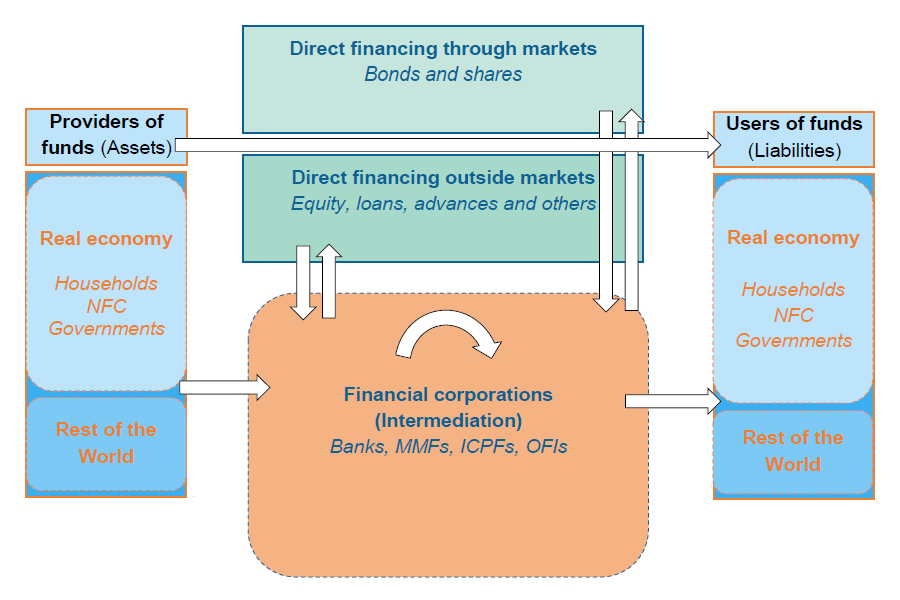Policy in focus: EFSIR and financing the EU economy

date: 23/09/2015
The European economy, like all economies in the world, is financed through a variety of different channels. In its annual European Financial Stability and Integration Review (EFSIR), which was published in April, the European Commission provides a clear overview of these channels. The report recognises the importance of financial intermediation in our economies. However, it also highlights some of the other financial channels, which are at least as important.
The role of banks
What exactly constitutes 'financing'? And does financing the economy always involve the participation of a bank?
When we pay for food or clothes with cash, there is no financing involved. However, if we take out a mortgage to buy an apartment, a bank will provide the necessary financing. Essentially, financing is required when there is a lag between the moment a product is received or a service is provided and the moment it is paid for by the consumer.
There are many examples in everyday life of this kind of lag in payment that doesn’t involve the participation of a bank. When you go on holiday, for example, you might buy your tickets two or three months before you leave. You use water and electricity every day, but you only pay your bills at the end of the month.
Financing the EU economy
The chart below summarises the different financing channels used in the economy. Once interbank and other inter-financial positions are discounted, the three financing channels are roughly the same size.

Source: European Financial Stability Review, April 2015
Financing European companies
The report also examines how the EU economy is financed by analysing the different sources of funding being used by corporates and other economic agents. These different sources include funding obtained through the financial sector (bank loans, issuing securities etc.) or through other channels (family equity, intercompany loans, trade credit etc.).
The way the economy is financed can vary greatly from one country to another. For instance, financial markets and financial intermediation are more developed in Western Europe than in most of the newer Member States. So the report includes a country-by-country analysis of all 28 EU Member States.
The report feeds into the European Commission’s on-going work to develop a Capital Markets Union (CMU). With the CMU, the Commission is exploring ways of reducing fragmentation in financial markets, diversifying financing sources, strengthening cross-border capital flows and improving access to finance for businesses, particularly SMEs.
Read more on how the European economy is financed in the European Financial Stability and Integration Review
